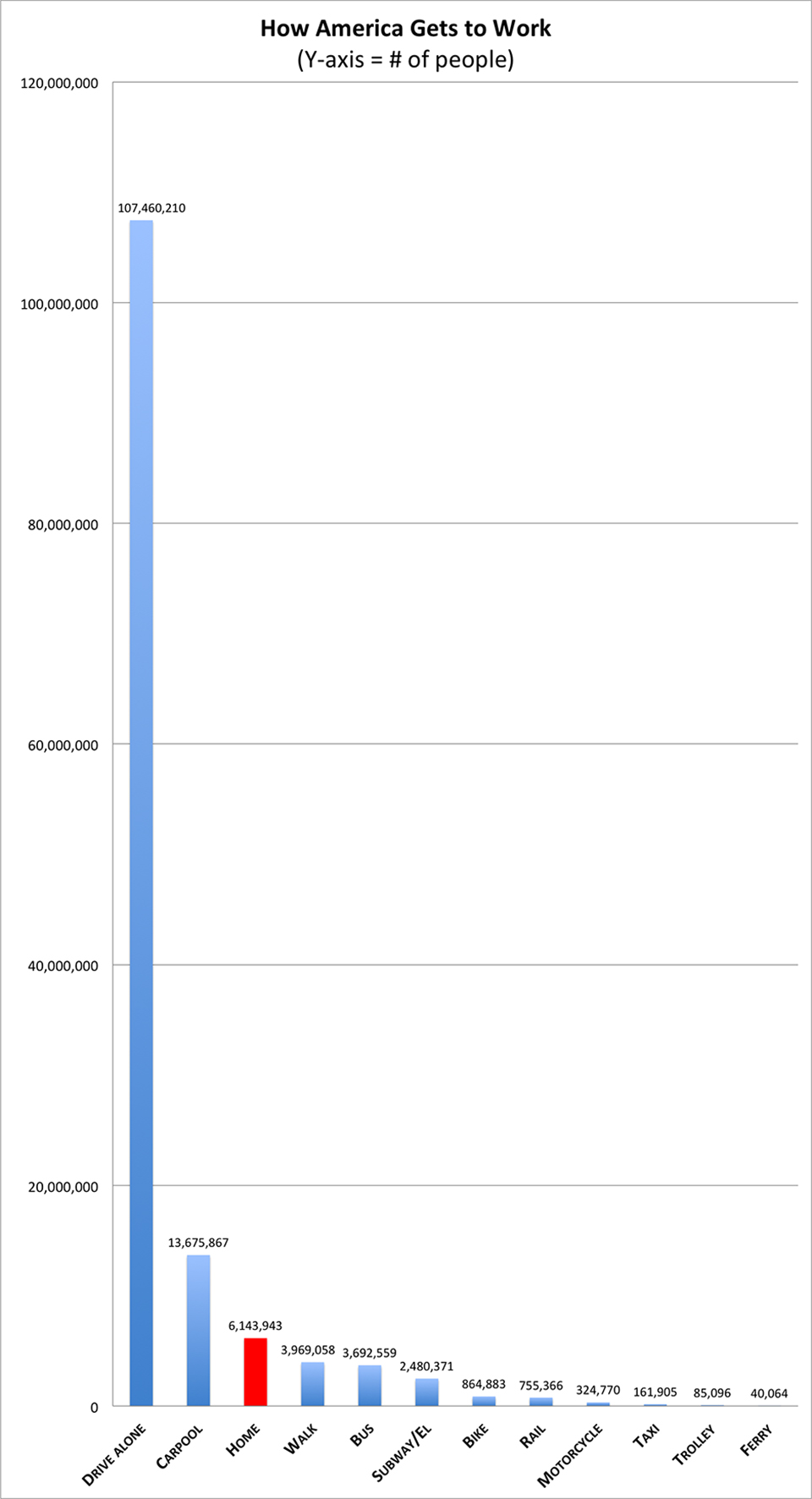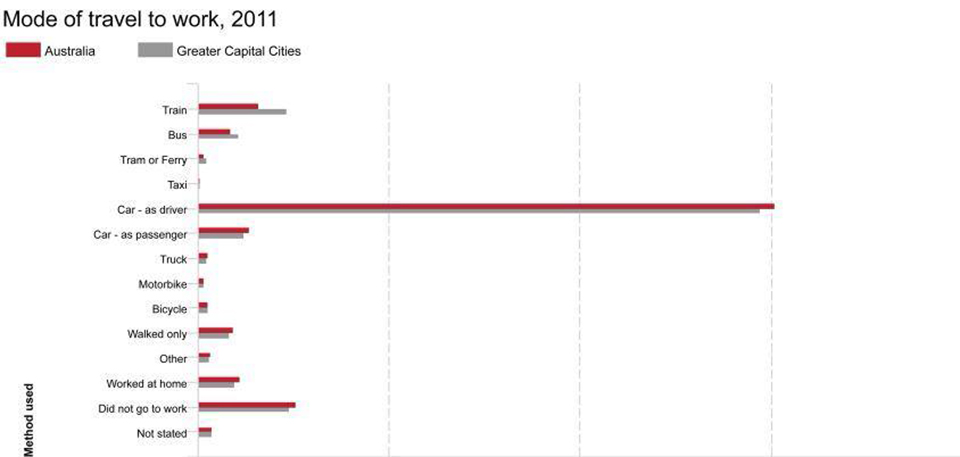


Although unable to find a chart specifically for Sydney and Perth, from the chart immediately above, we can see that Australia in general is similar to the U.S. in its automotive to public transit ratio. The U.S. has a population of 325M and a total of 250M vehicles, or 76% cars to humans of any age. Australia at a 23M population and 17M vehicles has a 74% cars to humans ratio.
The obvious fact, that is so well demonstrated here, is that in countries where people can afford cars, they will use them, despite the inconvenience of traffic congestion. The vast majority of workers want the freedom to go exactly where they want to go, exactly when they want to go, and to be able to secure things in their personal locker wherever they go.
For details on how traffic congestion can be solved for roughly 1/10 the cost and in 1/10 the amount of time see www.projectmicrocar.co.nz. This solution can even be cost neutral to governments by them purchasing and leasing the Tangos to the single-occupant drivers that are creating the congestion. Lane capacity for standard cars is 2,000 vehicles per hour; for Tango-type cars it is 4,400 VPH (more than double) according to a Booz-Allen-Hamilton / University of California, Berkeley study funded by the California Department of Transportation (CalTrans). See these reports on our downloads page.
Because the higher proportion of Tangos on the road compared to standard cars of any size, the more impact they will have on solving congestion, Australia is a perfect location to incubate this disruptive method of curing congestion and parking problems. In the U.S. extremely high numbers and thus volume of production would be required to make a difference, whereas in Sydney and Perth, a much smaller total number could create a huge benefit.
“The significant problems we face cannot be solved by the same level of thinking that created them.”
“The formulation of the problem is often more essential than its solution, which may be
merely a matter of mathematical or experimental skill.”
“If I had an hour to solve a problem I'd spend 55 minutes thinking about the problem and 5
minutes thinking about solutions.”
― Albert Einstein
New Zealand Site
United States Site